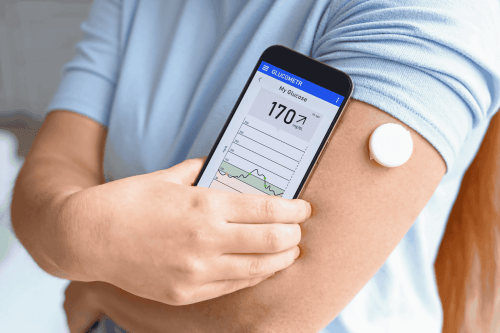
Workplace violence is a significant concern across various industries, affecting employee safety, productivity, and overall organizational morale. Moreover, it encompasses a range of harmful behaviors, including physical assaults, threats, harassment, and verbal abuse, occurring within a work setting. As stated in OSHA’s fact sheet, each year, 2 million American workers fall victim to workplace violence. However, on a brighter note, advanced technology today offers new and innovative solutions to prevent and manage such incidents of workplace violence. This blog explores the impact of technology on workplace violence prevention, highlighting key tools and strategies transforming how organizations protect their employees.
The Impact of Technology on Prevention
Technology plays a pivotal role in enhancing workplace violence prevention efforts. Furthermore, technology provides organizations with the means to detect, respond to, and mitigate violent incidents more efficiently. Here are some crucial areas where technology is having a significant impact.
Surveillance and Monitoring Systems
Modern surveillance and monitoring systems are at the forefront of workplace violence prevention. Thus, high-definition cameras, facial recognition software, and motion sensors help in continuously monitoring the workplace environment. Moreover, these systems can detect unusual activities and alert security personnel in real-time, enabling swift intervention before a situation escalates.
Video Analytics
Advanced video analytics can detect suspicious behavior patterns. For instance, there can be loitering or unauthorized entry into restricted areas happening around. Therefore, by analyzing video feeds, these systems can generate alerts for potential threats, allowing for proactive measures.
Access Control Systems
Moreover, technology-driven access control systems, such as biometric scanners and smart cards, restrict unauthorized entry into sensitive areas. These systems ensure that only authorized personnel have access. Therefore, they reduce the risk of violent incidents.
Communication Tools and Emergency Response
Effective communication is crucial in preventing and managing workplace violence, and technology enhances communication channels. Therefore, this ensures timely dissemination of information during emergencies.
Panic Buttons and Mobile Apps
Many organizations are implementing panic buttons and mobile apps that allow employees to quickly alert security or emergency services in case of a threat. For instance, the GPS tracking in these tools enables rapid response teams to locate and assist employees in distress.
Mass Notification Systems
Furthermore, mass notification systems send alerts to all employees through various channels, such as emails, text messages, and loudspeakers. Without a doubt, these systems provide critical information during emergencies. Consequently, this impact of technology guides employees on the appropriate actions to take.
Predictive Analytics and Threat Assessment
Predictive analytics and threat assessment tools leverage data to identify potential risks and prevent workplace violence. Therefore, by analyzing historical data, these technologies can predict future incidents and inform prevention strategies.
Behavioral Analysis Software
Behavioral analysis software monitors employee behavior for signs of distress or agitation. For instance, detecting changes in behavior patterns, such as increased absenteeism or aggressive communication, can flag individuals who may pose a risk.
Incident Reporting System
Furthermore, digital incident reporting systems allow employees to report concerns anonymously. For instance, the data collected can be analyzed to identify trends and hotspots for violence, enabling targeted interventions.
Training and Simulation Programs
Virtual Reality (VR) Training
VR training programs simulate real-life scenarios. Therefore, this impact of technology allows employees to practice their responses in a safe and controlled environment. Moreover, these immersive experiences improve retention and prepare employees for various situations.
Online Training Modules

Another impact of technology is the accessibility of education online. Online training modules provide flexibility. For instance, they enable employees to complete training at their own pace. Furthermore, these modules often include interactive elements, quizzes, and videos to enhance learning outcomes.
American Medical Compliance (AMC) is a leader in providing compliance training modules. Our course, “Violence in the Workplace for Healthcare Providers,” is specifically crafted to address the unique challenges faced by healthcare professionals. With this course, you’ll equip your team with the essential knowledge and skills to recognize, prevent, and respond effectively to workplace violence, ensuring a safer environment for everyone.
Benefits of Technology-Driven Prevention Strategies
The integration of technology into workplace violence prevention strategies offers several benefits:
Proactive Threat Detection
One impact of technology is it enables organizations to identify potential threats before they escalate, Therefore, there will be timely intervention and prevention.
Improved Response Times
Additionally, real-time alerts and communication tools ensure that security personnel and emergency services can respond quickly to incidents. Minimized harm is a crucial impact of technology.
Enhanced Employee Safety
Advanced surveillance and access control systems create a safer work environment, without a doubt. Consequently, these reduce the risk of violence.
Data-Driven Decision Making
Moreover, predictive analytics and incident reporting provide valuable insights. Therefore, this impact of data technology helps organizations develop informed prevention strategies.
Effective Training Programs
Another impact of technology is seamless technology-driven training. For instance, training programs equip employees with the skills and knowledge to recognize and respond to workplace violence effectively with the right accessible modules.
Challenges and Considerations
There are numerous positive impacts of technology. However, there are also challenges and considerations to address.
Privacy Concerns
Surveillance and monitoring systems can raise privacy concerns among employees. Therefore, it is essential to balance security measures with respect for employee privacy. Moreover, there should be transparent communication about the use of technology.
Implementation Costs
Additionally, before reaping the rewards of the positive impact of technology, organizations also need to invest to implement and maintain tech effectively. Therefore, organizations need to assess the cost-benefit ratio. Nevertheless, there are always long-term savings from reduced incidents and improved safety.
Employee Buy-In
Furthermore, successful implementation of technology-driven prevention strategies requires employee buy-in. Therefore, organizations should involve employees in the process, providing training and addressing concerns to ensure acceptance and cooperation.
Integration with Existing Systems
New technologies must be compatible with existing infrastructure. Additionally, seamless integration is crucial for the effectiveness of prevention measures.
The Future of Workplace Violence Prevention with the Impact of Technology
The future of workplace violence prevention lies in the continued advancement and integration of technology. Therefore, emerging technologies, such as artificial intelligence (AI) and the Internet of Things (IoT), hold promise for further enhancing prevention efforts.
AI-Powered Predictive Analytics
One of the most interesting impacts of technology is Artificial Intelligence. AI can analyze vast amounts of data to identify complex patterns and predict potential threats with greater accuracy. Therefore, this will enable more proactive and targeted interventions.
IoT-Enabled Safety Devices
Moreover, IoT devices, such as smart sensors and wearable technology, can monitor employee well-being in real-time. These devices can detect signs of stress or physical altercations, triggering alerts and responses.
Blockchain for Secure Reporting
Last but not least, blockchain technology can enhance the security and confidentiality of incident reporting systems. Therefore, it can encourage more employees to report concerns without fear of retaliation.
Conclusion
With the impact of technology, we can revolutionize workplace violence prevention, without a doubt. Additionally, technology offers innovative solutions to enhance employee safety and security. Therefore, by leveraging advanced surveillance systems, communication tools, predictive analytics, and training programs, organizations can create a safer work environment and effectively manage the risks associated with workplace violence. Furthermore, as technology continues to evolve, it will play an increasingly vital role in protecting employees and fostering a culture of safety and well-being in the workplace.
Take proactive steps to ensure safety in your organization by enrolling in our online course, “Violence in the Workplace.” This comprehensive course is designed to educate employees on how to protect themselves and others from workplace violence. Equip your team with the knowledge and skills to recognize, prevent, and respond to potential threats. Sign up today and contribute to a safer, more secure work environment! Enroll here.



